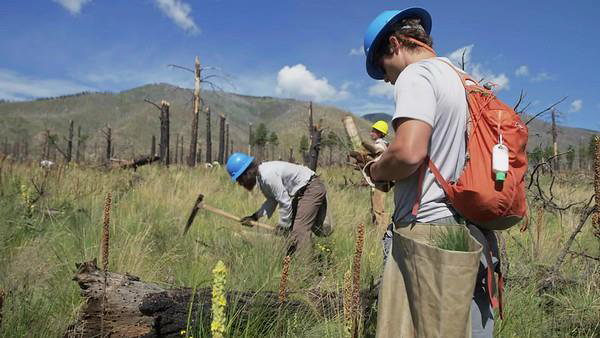Located in Northern Arizona on the Southern Colorado Plateau, the Coconino National Forest is at the heart of the world’s largest continuous ponderosa pine forest. The headwaters for the Verde River, this vast forest captures rain and snowfall, funneling water downstream to serve the major metropolis of Phoenix. Along this journey, streamflows originate from high mountain peaks like Mt. Humphrey (12,000 ft), and flow through rugged canyons, eventually arriving in the Sonoran Desert ecosystem.
These ponderosa pine forests previously consisted of open, “park-like” stands of ponderosa pine trees. Natural lightning-caused fires and frequent low-intensity burning by Native Americans marinated the Forest’s healthy state. Over the last century, decades of fire suppression, grazing and logging have produced dense second growth forests that are particularly vulnerable to severe wildfire. During the summer of 2010, the Schultz Fire erupted on the Coconino, quickly burning more than 15,000 acres. Following the fire, monsoon rain storms fell near Flagstaff, triggering massive mud slides that endangered local water supplies.

Photo: Salt River Project
With the support of our leading reforestation partner, the Salt River Project, we are working very closely with Forest Service staff to reforest the Schultz Fire area over the past several years. With their support, we’ve planted more than 230,000 native conifer seedlings across the areas that were most severely impacted by the fire. Each seedling was locally cultivated with seeds collected from nearby healthy forests and planted with seedling protectors to ensure that the seedlings are not damaged by deer and elk.
As seedlings are planted and begin to take root, a new forest will be re-established. Reforestation on the Schultz Fire burned area will help ensure clean water supplies for communities downstream, enhanced wildlife habitat for the species that depend on this area, and increased recreational experiences for thousands of forest visitors.

